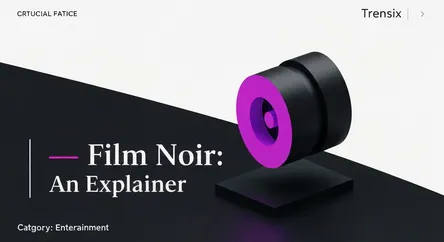Entertainment
Film Noir: An Explainer

Discover Film Noir, the classic Hollywood style known for its dark themes, cynical heroes, and iconic visual aesthetics. Learn why it's trending.
What is it?
Film Noir, French for "black film," is a cinematic style prominent in American crime dramas from the early 1940s to the late 1950s. It's characterized by its distinct visual aesthetic, featuring low-key, black-and-white lighting (chiaroscuro) that creates stark shadows and a sense of unease. Narratives often revolve around cynical, world-weary protagonists, such as private investigators, who become entangled with mysterious and dangerous women known as "femme fatales." The overarching mood is one of pessimism, fatalism, and moral ambiguity, reflecting the anxieties of the post-war era.
Why is it trending?
The influence of Film Noir is timeless, and its stylistic DNA is constantly being reinterpreted in modern cinema and television through the "neo-noir" genre. Blockbusters like The Batman and acclaimed series like True Detective borrow heavily from noir's visual language and thematic concerns. The style's complex anti-heroes and morally gray worlds resonate with contemporary audiences who appreciate sophisticated, character-driven storytelling. Furthermore, streaming platforms have made classic noir films more accessible, sparking renewed interest among a new generation of cinephiles.
How does it affect people?
Film Noir has profoundly shaped cinematic language, popularizing storytelling techniques and character archetypes that are still used today. For viewers, it provides a captivating look at the darker side of human nature, challenging simplistic notions of good versus evil. The genre's exploration of alienation, obsession, and moral compromise continues to be relevant, offering a stylized yet potent reflection of societal anxieties. Its aesthetic has also influenced fashion, photography, and graphic design, cementing its status as a cultural touchstone.